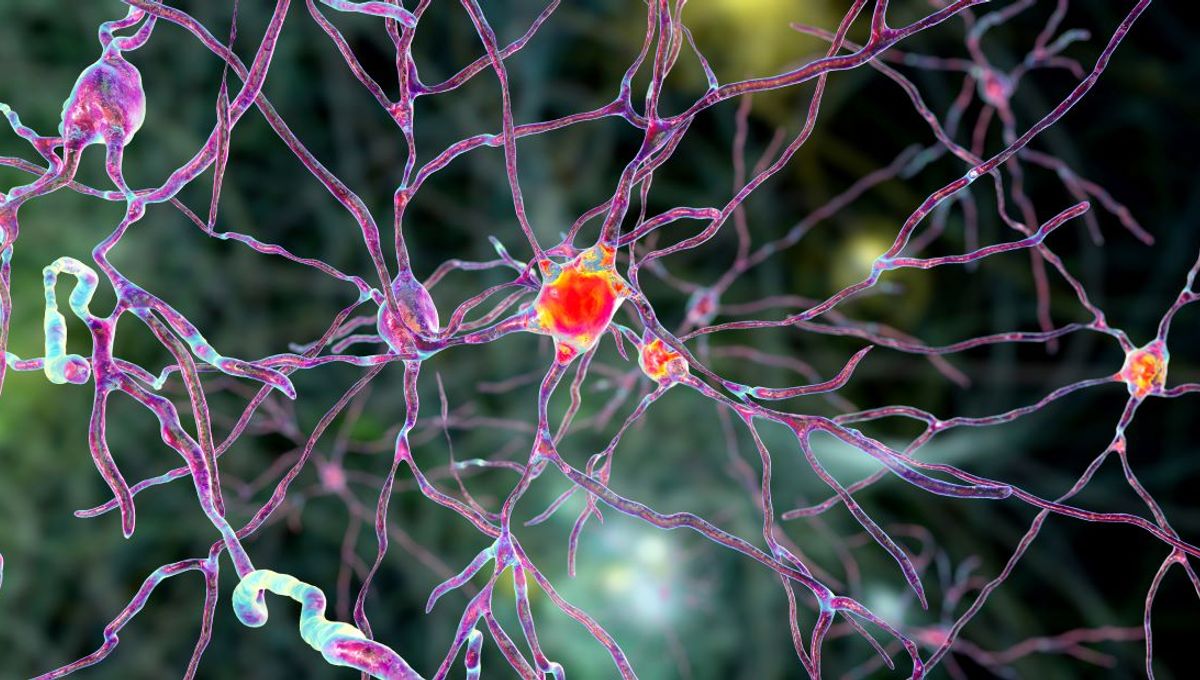
We are one step closer to understanding one of the biggest mysteries in neuroscience, as scientists have figured out the structure of the protein that triggers Huntington’s disease. The discovery brings hope for a treatment that could stop the disease in its tracks, but that’s not all. Because similar proteins have been implicated in other neurodegenerative illnesses, like Alzheimer’s disease, this finding could have groundbreaking implications for those too.
The protein in question is called huntingtin (HTT). In Huntington’s disease, a genetic mutation causes the HTT protein to develop an abnormally long strand of repeating amino acids within its structure, called the polyglutamine (polyQ) stretch. Usually, there are an average of 17-20 repeats of this sequence. In Huntington’s, there are often 40 or more. The more repeats, the earlier the disease’s symptoms – like personality changes and movement disorders – start to appear.
The mutant form of the protein builds up in the brain and folds itself into a shape that is toxic to cells. Proteins that behave in this way are referred to as amyloids and are implicated in a range of other disorders. In the brain, there are Alzheimer’s disease and Parkinson’s disease, both of which are linked to clusters of abnormal beta-amyloid protein. When different amyloid precursors start to build up in the rest of the body, it can lead to various pathologies collectively referred to as amyloidosis.
Scientists knew this was happening, but crucially, they did not understand how. Enter the team from the Stowers Institute for Medical Research.
“For three decades, we’ve known that Huntington’s and related fatal diseases occur when proteins contain more than around 36 Qs in a row, causing them to form chains of proteins in the brain, but we didn’t know why,” said senior author Dr Randal Halfmann in a statement. “One of the big mysteries of Huntington’s, Alzheimer’s, and ALS is why disease coincides with amyloid, yet the amyloids themselves are not the main culprits.”
The research team, led by co-first authors Drs Tej Kandola and Shriram Venkatesan, determined the structure of the amyloid nucleus for HTT protein, the “spark” that sets off the chain reaction of protein misfolding.
“This is the first time anyone has experimentally determined the structure of an amyloid nucleus even though most major neurodegenerative diseases are associated with amyloids,” said Halfmann.
One of the keys to this discovery is that the nucleus only forms in isolated proteins. Finding a way to clump the proteins together could stop amyloid formation altogether, potentially revolutionizing treatment for this devastating disease.
During their experiments, the team turned to a new technique, just developed in Halfmann’s lab, called Distributed Amphifluoric Förster Resonance Energy Transfer (DAmFRET). It allows scientists to watch how proteins self-assemble within single cells, enabling them to tweak the protein’s sequence to see what effects this has. The team used this technique to try to determine the minimum number of polyQ repeats needed for HTT to start forming amyloid bundles within a single cell, called nucleation. The magic number, they say? Thirty-six.
“We now have strong evidence that 36 Qs is the critical number for nucleation to happen in single protein molecules, and moreover, that this is how it happens inside living cells,” Halfmann explained.
Armed with this knowledge, the team hopes future work can explore ways of preventing nucleation so that the toxic cascade of protein misfolding is never triggered in the first place.
As Halfmann put it, “We’ve now figured out what the first link in the chain looks like, and, in doing so, have discovered a new way to stop it.”
The study and publicly available peer reviews are published in eLife.
Source Link: Just One Protein Is All That's Needed To Spark Huntington's Disease